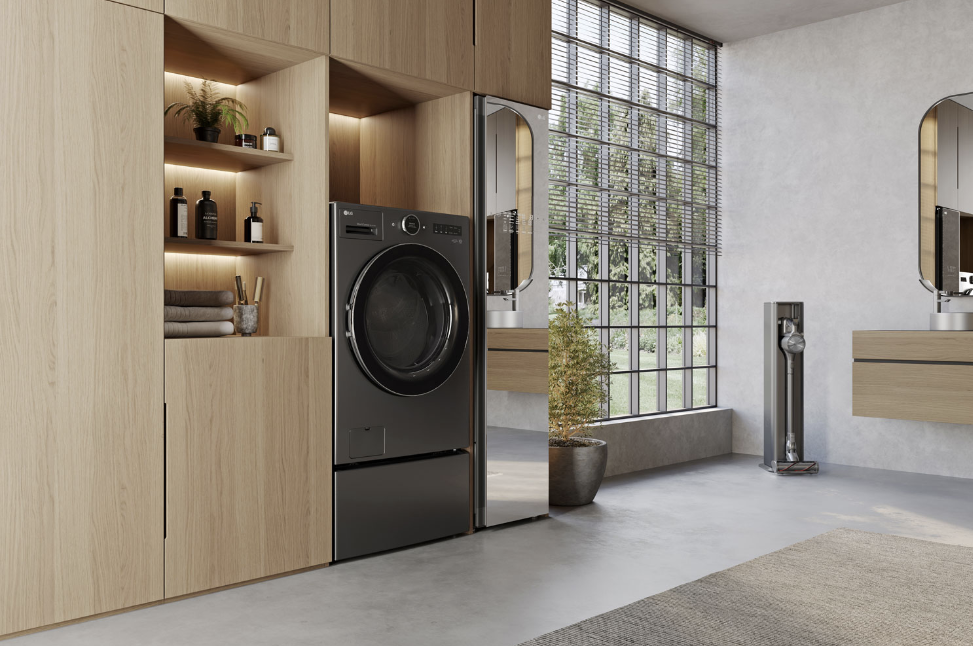
All-in-one washer dryer combo machines are single front-load machines that both wash and dry clothing in the same drum. And they are gaining steam (pun intended) as consumers realize their benefits, from space saving to efficiency. If you have ever left a load in the washer too long and forgot to transfer items to the dryer, a machine like this can be a lifesaver. There are different types of washer dryer combos from which to choose, namely heat pump versus condenser machines.
Heat pump vs. condenser technologies in washer dryer combos
If you have decided to choose a washer dryer combo as your new laundry appliance, there are two types to consider: washer dryer combos with heat pump technology and those with condenser technology. These two technologies have a different impact on efficiency and sustainability. Here, we’ll help you understand how they both work, what makes them different from one another, and the advantages and disadvantages of both.
Understanding heat pump and condenser technologies
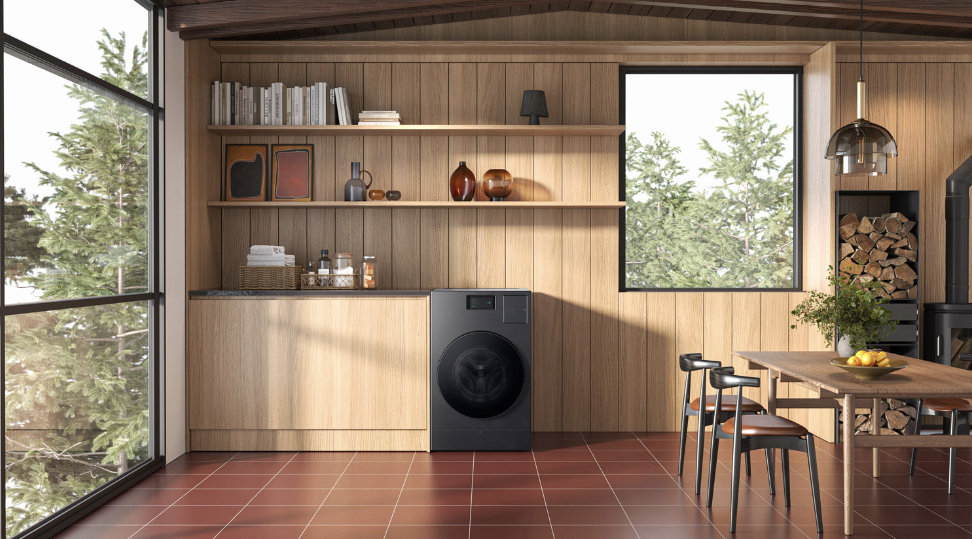
In both cases, the technology relates to how the machine get rids of hot air. Washer dryer combo machines overall generally take longer to dry your clothing than a traditional standalone dryer. But they work differently from one another as well.
Heat pump dryers
A heat pump dryer uses a closed-loop heat exchange system to dry clothing and linens at a low temperature. They work by the hot air absorbing moisture from your clothing, then moving through an evaporator that removes the moisture. Whatever air remains is reheated and used to keep drying items, and the cycle (pun intended) continues.
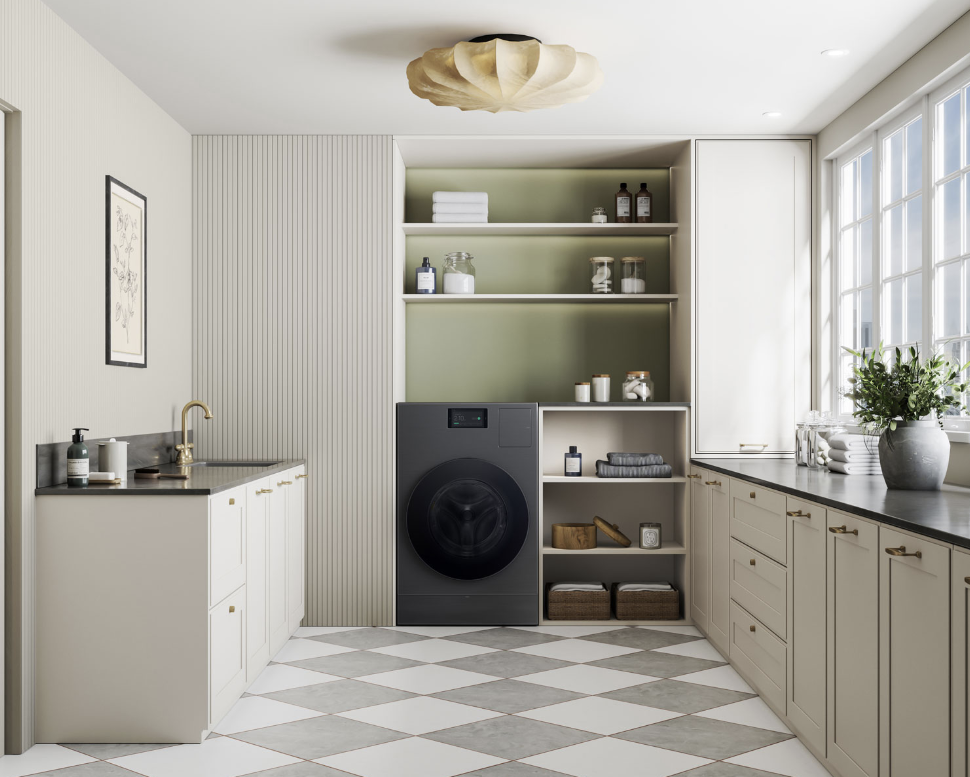
This means drying takes longer. Clothing might still feel a bit wet when you remove them, requiring that you shake them out. But delicate clothing and linens are protected from extreme heat damage. Since heat pump dryers expel cool air, however, they can cool down a room. You might not mind this during the humid summer months. But during the cold winter, you’ll get extra cooling you might not want.
Condenser dryers
Unlike a heat pump dryer, a condenser dryer dries clothing and linens at a high temperature. They heat air in the drum to absorb moisture from your clothes. This heated air is then passed over a cool heat exchanger. This condenses the moisture, which drains through a drain line. This means laundry can be dried much more quickly. But this type of dryer, or washer dryer combo, also tends to use more energy.
These are ventless washer dryers that don’t require a hose for hot air to be vented from. The biggest advantage here is that they allow for installation in virtually any room of the home. However, it does need a supply of cool air to work. So, a ventless washer dryer all in one needs to be in a well-ventilated room that allows for warm air to easily escape.
Benefits of heat pump technology in washer dryers
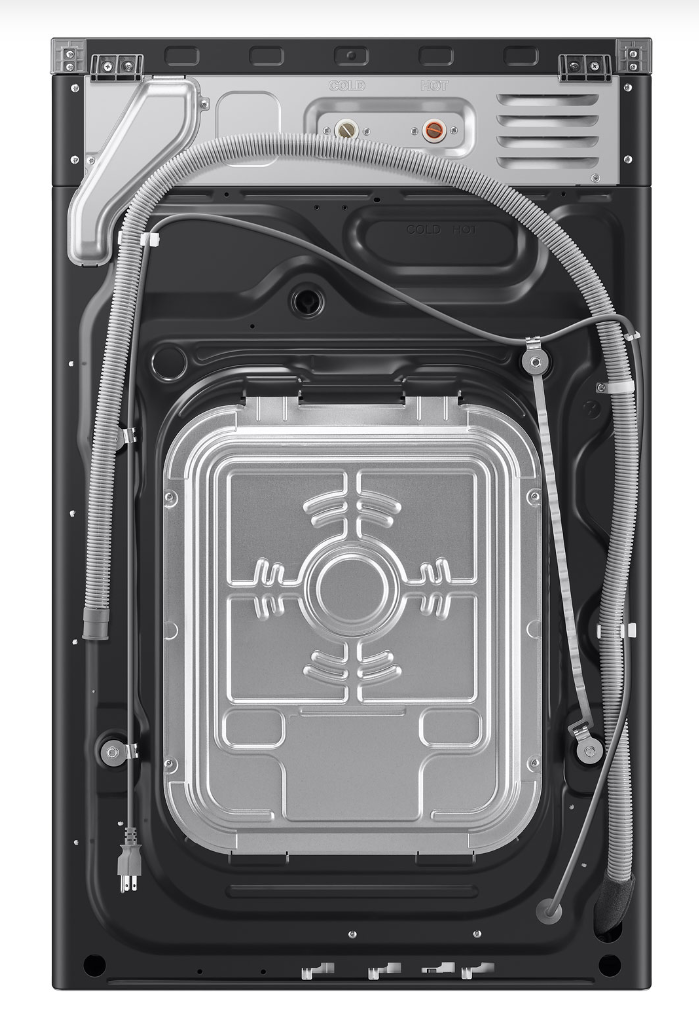
As you can infer, there are some benefits to using a heat pump washer dryer.
More energy efficient
Since these machines dry clothing and linens at a lower temperature, they are generally more energy efficient. They recycle heat, lowering your electricity bills. According to ENERGY STAR, heat pump dryers use at least 28 percent less energy than a standard dryer. In fact, depending on where you live, there might even be tax rebates for using heat pump washer dryer combos.
Gentler on clothing
As noted, heat pump dryers are gentler on clothing since they dry at a lower temperature. It’s sort of like being able to enjoy a delicate cycle for all your clothing. This prevents shrinkage and helps preserve fabric integrity and colour. Clothing you might otherwise hang to dry can tumble in a heat pump dryer without worry that they’ll shrink or lose their shape.
Environmental benefits
The lower energy consumption doesn’t just benefit your energy usage and help lower electricity bills. This also has environmental benefits. You are emitting fewer emissions from the home, thus reducing your own carbon footprint.
Advantages of ventless washer dryers
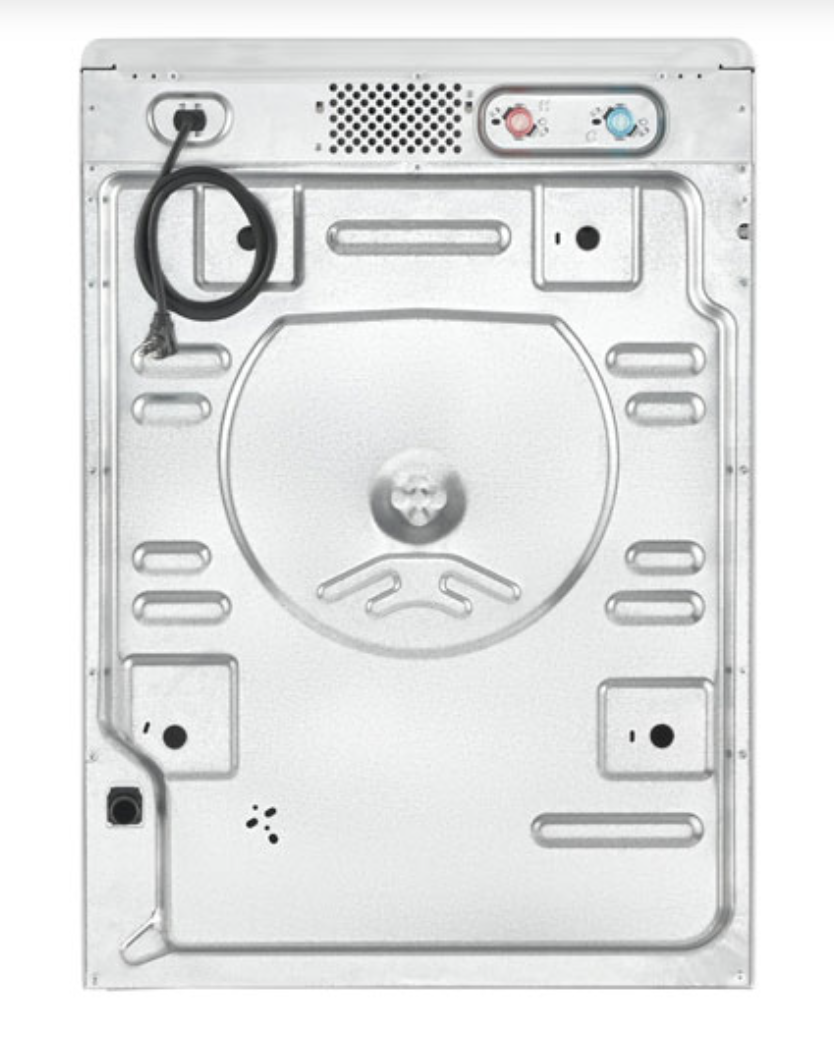
There are advantages to going with a ventless washer dryer as well.
More options for installation
Since ventless washer dryer combos don’t require an external hose for venting, you can place them pretty much anywhere. This is ideal if you want to have your washer dryer on the main level, or even upstairs versus the basement. For those with limited space, this provides an opportunity to install it where it fits best.
Installation flexibility
Because it doesn’t require a duct system, you can also install a ventless washer dryer combo more easily. This might help reduce installation costs and the overall complexity of the installation.
Moisture control
These machines have a unique way of managing moisture, using a supply of cool air. This is beneficial when used in enclosed spaces. All you need is a nice supply of cool air with which it can function.
Choosing between heat pump and condenser dryers

So, how do you choose which option is right for you and your family? It comes down to your personal needs and preferences.
If you live in a busy household where time is of the essence, you might prefer a condenser dryer that can get clothing dried faster. This is especially so if you have a spot to hang delicate items to air dry and typically only dry non-delicate items. If you often do multiple loads in a day, a condenser washer dryer combo won’t impede your process.
If you don’t do many loads every week or tend to do a single load twice a week, for example, a heat pump dryer could be ideal. Even though they take longer, they save energy. You can also toss just about anything in the machine (always check your clothing labels for instructions) to get everything done in one fell swoop.
A heat pump dryer is also ideal if you want flexibility in terms of placement and installation. You might find that the long-term cost benefits relating to the reduction in energy usage could be worth going this route as well.
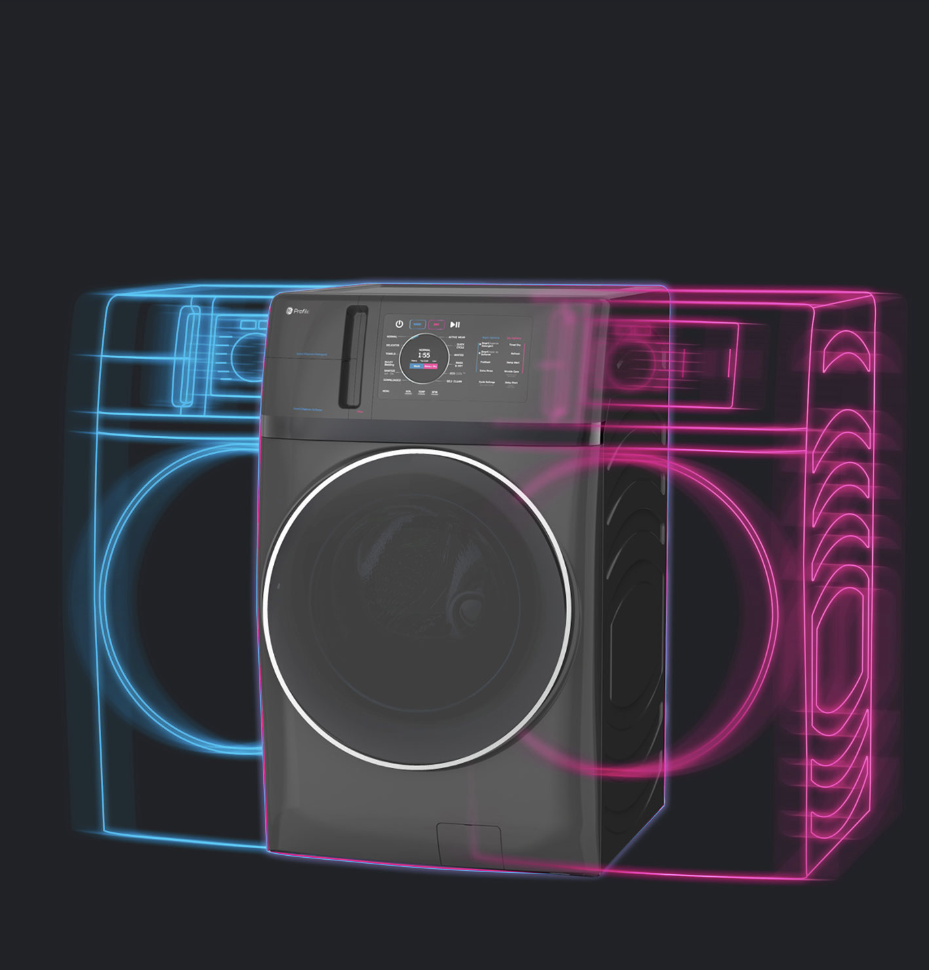
How heat pump technology works
To gain a deeper understanding, let’s look at how heat pump technology works.
It’s similar to a reverse-cycle air conditioner. Hot air emits from the machine to pull moisture from your clothing and linens. The hot air passes through an evaporator that pulls the moisture from items inside the drum, sending it to a storage tank or drainage hose. Whatever dry air is left is reheated once again and used to continue drying clothing. And this cycle repeats. They run at a temperature of about 50°C while a typical condenser dryer will run much hotter at 70-75°C.
How condenser technology works
What about condenser technology in dryers or washer dryer combos? These go the traditional route, using hot air that’s 70-75°C, as mentioned, to dry clothing. The hot air is sent to a condenser chamber, turned to water, and expelled through a drainage hose. In some machines, it’s sent to a container that you need to manually empty once the load is done. They require a well-ventilated area so the hot air can escape as it runs.
Energy consumption and efficiency
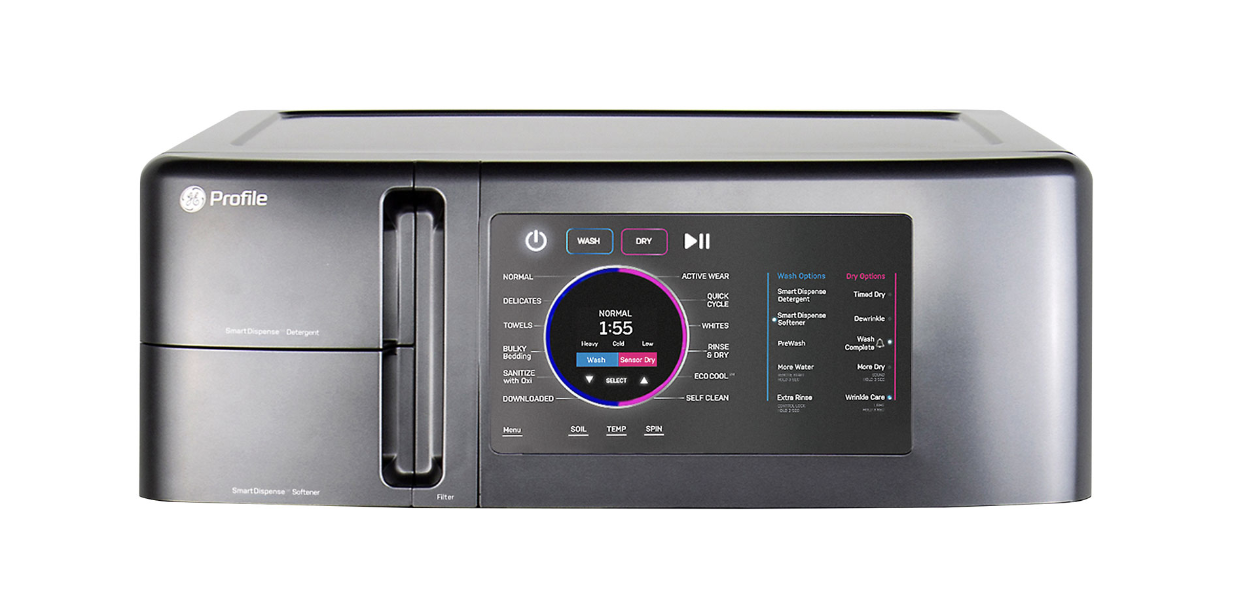
Washer dryer combos with condenser technology will dry clothing and linens much faster, even in larger loads. This makes them a great option for large families. But they can also be more expensive to run overall. They use more energy per load, which is the trade-off for getting your clothing dried more quickly.
Heat pump washer dryer combos are the more energy efficient choice. They are also gentler on clothing. But they run on lower temperatures, so they work more slowly. If you have a smaller family with less laundry needs, or you tend to do one load a day, you might be fine with this. If you have a lot of delicate clothing, you might prefer this anyway. High heat can damage delicate clothing, so a heat pump washer dryer combo might be preferred to preserve the longevity and quality of your clothing and linens.
Keep in mind that in both cases, when it comes to energy efficiency, even though heat pump washer dryer combos are overall more energy efficient, both types can carry ENERGY STAR ratings. This confirms that they operate as efficiently as possible. ENERGY STAR appliances, no matter the type, can help you save energy overall.
Maintenance and longevity considerations
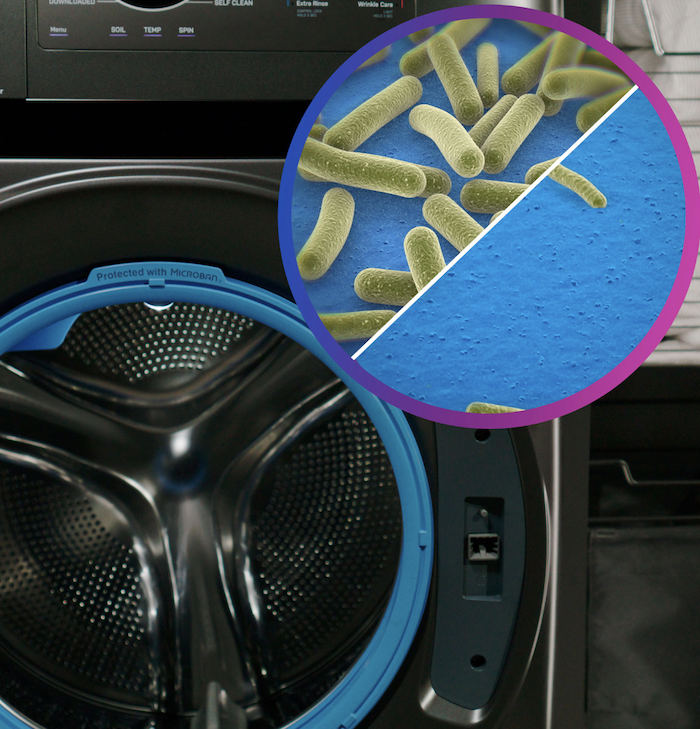
Regardless of which type of washer dryer combo you choose, maintenance is key to keeping the machine operating well for many years to come.
Clean the lint trap
As with any dryer, even standalone models, you should clean out the lint trap after every cycle. This captures an accumulation of lint from clothing and linens. Pull out and discard the lint build-up to ensure effective drying for the next cycle. This also ensures the machine runs properly not to mention safely.
Cleaning out limescale build up
You might come across limescale build-up over time. To remove this, fill the detergent container with a descaler and run the machine on a hot cycle. Run it a second time to ensure that all the descaler is gone before doing another load of laundry.
Draining and cleaning the filter
The filter, positioned at the bottom, right side of most machines, should be cleaned periodically as well. It collects grease and dirt which can cause odour over time. Place an empty tub under the filter, open the lid and open the filter. Wait for the water to run into the tub then clean out the filter hole with a non-abrasive cloth. Put the filter back in and discard the liquid in the tub.
Cleaning the cuff
The cuff of a washer dryer combo, the rubber ring that runs around the inside of the drum, can capture dirt and debris. Use soapy hot water and detergent on a clean cloth and rub it around the ring. If there’s stubborn stains, try using something like an old toothbrush to scrub. If there’s lint inside, remove it. Dry it with a clean, dry, non-abrasive cloth once you’re done.
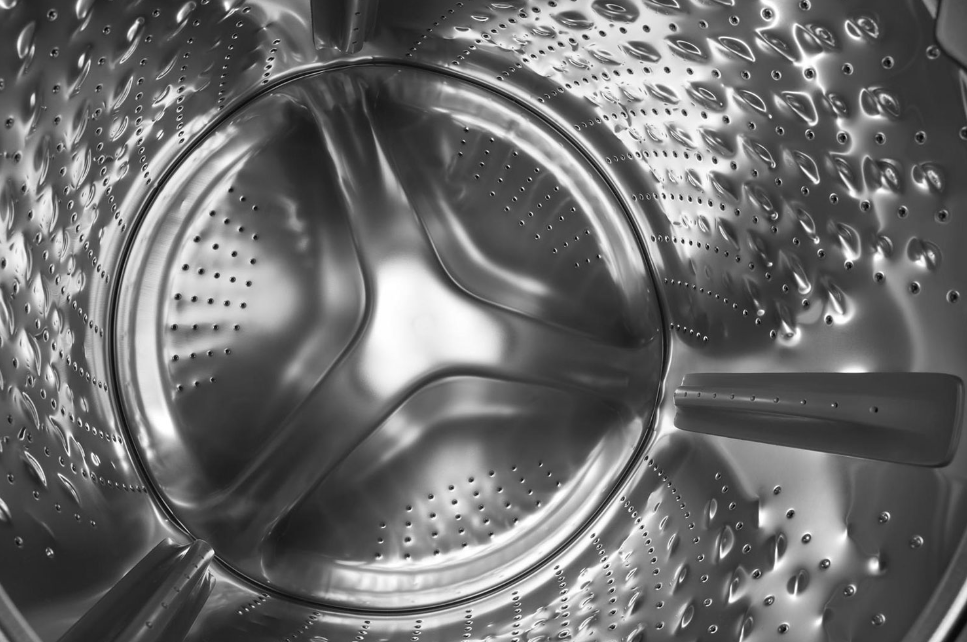
Clean the drum
The drum itself should be cleaned as well as bacteria can accumulate, especially if you wash clothing and linens frequently at a lower temperature. When the drum is empty, run an extra-hot cycle (as hot as the machine will do). Once done, leave the door open a smidge so the drum can air dry.
Clean the door seal
Lint can get trapped in the door seal, so run your hand around it to remove any lint that might be left behind. Periodically run a cycle with the drum empty. This can also help rinse away leftover lint before you run another wash.
Unclog the drain
If your washer dryer combo has a drain, you’ll want to make sure it’s free of blockages. If you notice water is left in the machine once a load is done or a cycle tends to take longer, this could be because it isn’t draining properly. Check the owner’s manual for the instructions on how to do this with your specific machine.
Take your pick!
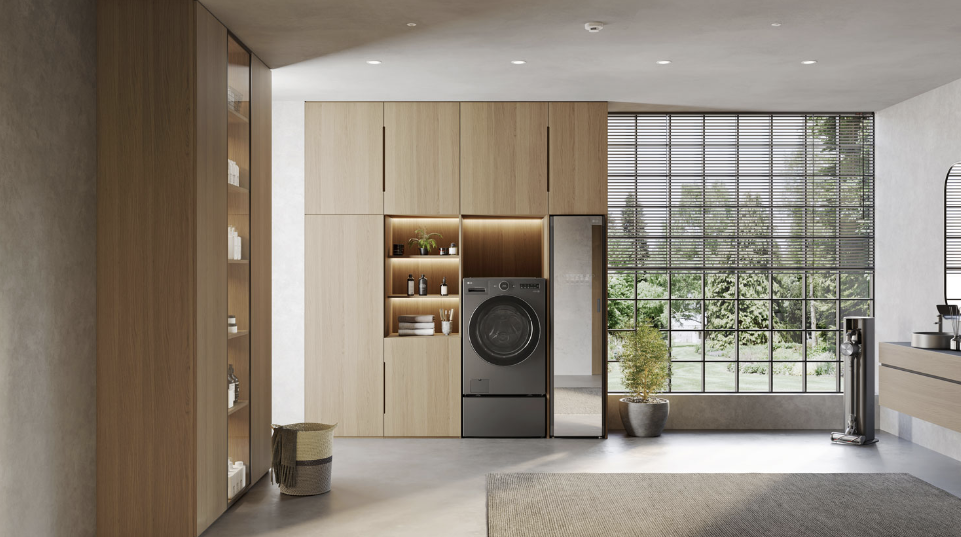
With both heat pump and condenser washer dryer combos, as long as you take good care of the machine, they should last for many years. Weigh the benefits and disadvantages of both types, considering the type of clothes you have, how often you wash, and relating to time and cost and energy savings. Take into account the placement options as well as installation. Look for a model from a reputable brand and with an ENERGY STAR rating. Once you do that, you’ll narrow down the choices to the perfect model for you.
Find a wide selection of both heat pump and condenser washer dryer combos at Best Buy Online.




